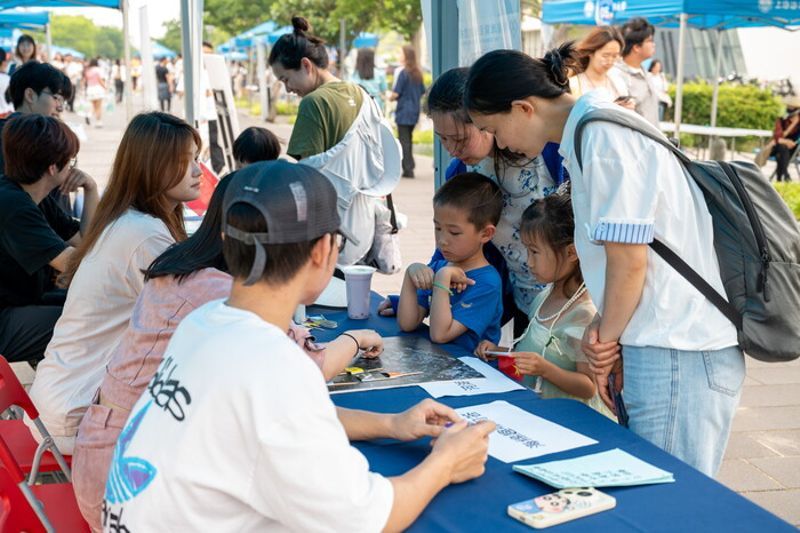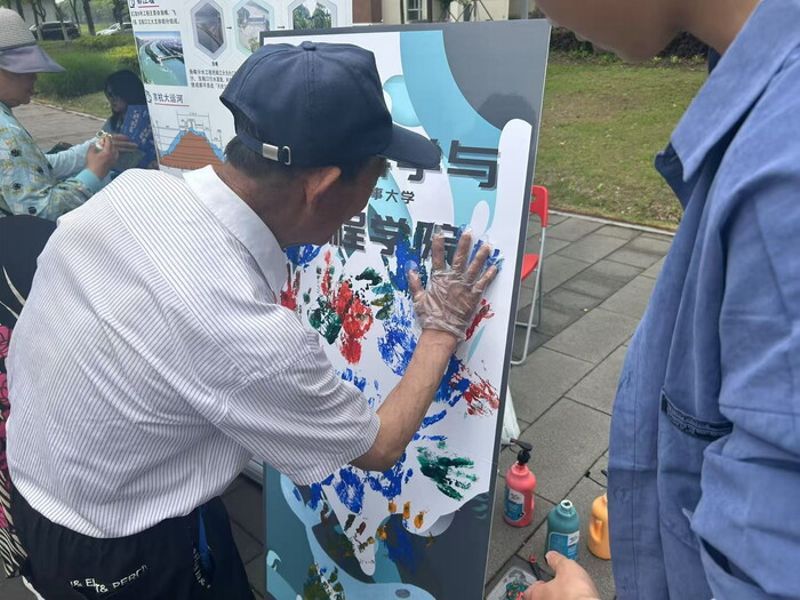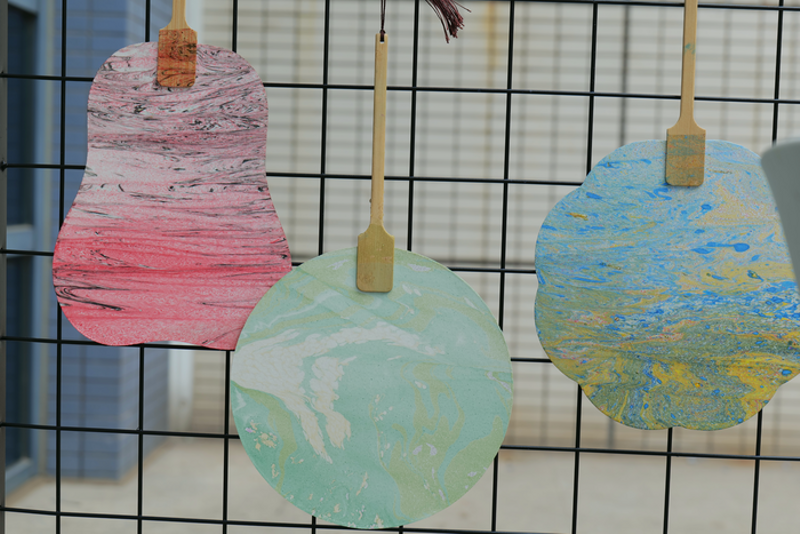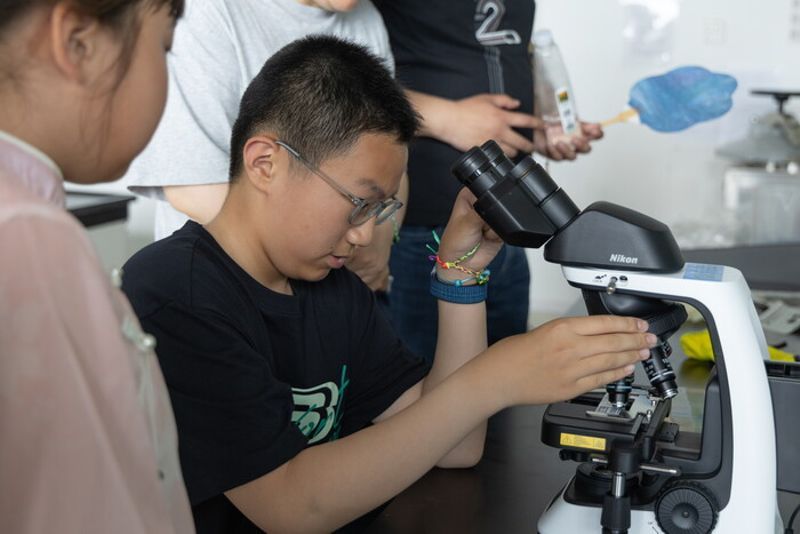On May 17th, the School of Marine Science and Engineering's Meet with the Sea ecological science popularization and Meet with Shanghai intangible cultural heritage experience theme activities were simultaneously opened in the North Square and Haike Building of the school, building a bridge between science and technology and culture through immersive interactive experience, attracting visitors to the Blue Covenant.
On the north square, the four major science experience areas are surging with a craze for knowledge. In the Knowledge Arena, ecological issues such as sponge city construction and water resource recycling triggered fierce answers, and sparks of wisdom burst out in the Q&A confrontation. In the River-Port Flag-planting challenge, participants held identification flags and accurately located the geographical coordinates of Chunlian River and Chifeng Port on the full-scale foam map of the Lingang New Area, further deepening their spatial cognition and emotional identity of the new area. In front of the most popular Water Purification Action experimental table, the moment when the turbid sewage is filtered by filter paper and activated carbon to clear the stream, the audience is amazed. The adjacent Creative Handprint Wall gradually blooms with green palm prints, and participants inscribe their oath to protect the ocean in a colorful way.
In the Haike Building, intangible cultural heritage skills and marine elements collide with unique sparks. In the lacquer fan production area, the moment the plain white rice paper fan is immersed in the colored lacquer, the blue and moon white are naturally smudged like the waves of the sea, and each finished product is an art treasure that cannot be copied; In front of the colorful bracelet weaving table, the anchor silver jewelry and the traditional auspicious knot art are intertwined into the wrist scenery; In the marine life rubbing area, a dialogue between ancient and modern is staged, and the patterns of jellyfish and whales are vividly displayed on the paper through traditional rubbing techniques, and the rice paper carries not only the fragrance of ink, but also the agility of marine civilization. In the intangible cultural heritage knowledge question and answer session, a special pass mode was set up, and visitors randomly selected five questions combining traditional skills and cultural allusions to unlock the qualification for in-depth experience.
In addition, the college also opened laboratories for ecological environment management and preparation of new materials, and Mr. Yang Kailiang led the visiting children to observe the microscopic world under the microscope, understand the pretreatment of drinking water, and experience the fun of science and technology in an immersive way.
From the rational exploration of ecological science and technology to the perceptual creation of intangible cultural heritage skills, the traditional ingenuity and maritime characteristics are blended, and more people can deeply understand the responsibility of marine protection through interactive experience.

Figure 1 Scene map of the Academy's Open House

Figure 2 Clean Water Action test bench

Figure 3 Riverport Flag Challenge

Figure 4 The Creative Handprint Wall activity area

Figure 5 Marine life rubbing activity

Figure 6 Colorful bracelet weaving activity

Figure 7 Paint fan making activity

Figure 8 Lab tour
